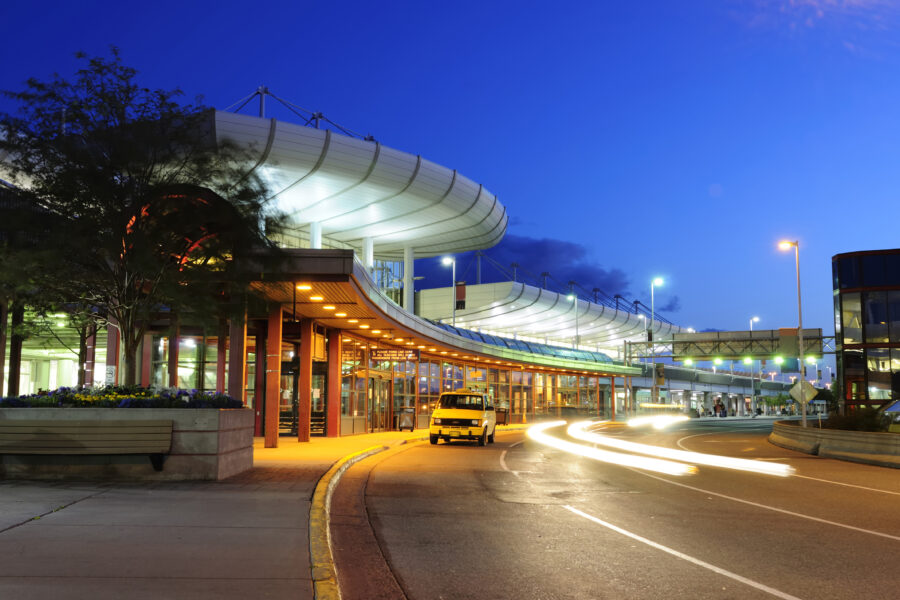Public Involvement Key to Unlocking Anchorage Airport’s Future

In order to secure Federal Aviation Administration (FAA) funding for development projects and to ensure Ted Stevens Anchorage International Airport is prepared for success in an uncertain environment, RS&H helped Alaska’s largest and busiest airport control its own destiny by preparing a thoughtful, engaged master plan – a document that hadn’t been updated for more than ten years.
Airport master plans follow a regimented process defined in the FAA Advisory Circular (authored by RS&H in 2005). In 2007, the airport attempted to update the master plan, but tenant and public stakeholder opposition stalled the process. This time, RS&H and the airport hypothesized that a thorough public involvement program would enable the successful update, which would identify untapped efficiencies in the existing facility and prepare the airport to accommodate a volatile yet critical air cargo industry.
“Despite the challenging times for the aviation industry, we hoped that the master plan would chart a proactive, agile, responsible, and fiscally responsible path forward grounded in a robust public involvement process,” said Airport Manager John Parrott, AAE.
Now that the plan has been updated, the airport will operate more efficiently in the near term, safety will be enhanced, passengers will experience a high level of service in the terminal, and the airport has a clear plan for accommodating long-range growth, which it can leverage to attract new and expanded air service to Alaska.
The updating began in June 2012 and provided the community with multiple opportunities to participate in the process, more than previous master plan efforts.
The master plan team organized and held more than 20 public meetings and nearly 100 stakeholder meetings, including neighborhood groups and airline tenants. The public involvement effort began in July 2012 and reached its peak between February and May 2013 when four public meetings were held in four months. The final plan for the airport’s future was presented publicly in December 2013. The outcome reflects community priorities, including making better use of existing facilities and addressing the concerns about recreation areas near the airport.
The meetings also laid the groundwork for improving ongoing communication between the airport and community because it included an Airport-Community Communications Plan. This plan documents commitments the airport has made to share information with the public while defining a process for the public to communicate with the airport.
Nearly 20 percent of the project budget was dedicated to public involvement – an unprecedented amount for this airport. While the quantity of public involvement meetings was higher than ever before for a master plan effort, the quality and techniques were also improved to generate meaningful input to the process. Public meetings were followed by an “online open house” hosted on the project website that ran for two weeks following each live event. These enabled interested community members more opportunity to engage in the project on their own time.
When Alaska’s summer began after Memorial Day in 2013, the team communicated with the public in another way. A series of “listening posts” were held to present project information in community places. The team brought the project to the community instead of expecting the community to come to the project. Representatives visited a fishing derby, a local marathon, and other events to gather feedback on the project.
Overall, the public involvement process helped the project team define a demand-dependent, phased-approach to future airport development. While a new runway had been proposed to help alleviate future congestion, the technical innovations associated with the findings of the master plan will help the airport operate more efficiently and potentially delay the need to build an expensive new runway.
An early phase of development will include a modification of the airport’s runway use to reduce congestion during peak periods. Such an approach required careful consideration of community concerns about noise, since some residents would experience more airport noise. However, most members of the community understood that some compromise was required to allow the airport to operate efficiently without spending the hundreds of millions of dollars necessary to construct a new runway.
A recent survey of the public involvement process found that 84 percent of respondents felt the master plan materials and communication were either satisfactory or excellent. The project team was pleased with this feedback. The airport, which is surrounded by residential and recreation areas, required a thoughtful plan that considered how future growth will impact the community.
“RS&H stepped up and provided great local project management that worked with a compressed schedule to achieve the desired results, including over 100 separate public input opportunities and delivered not just a single path forward but a group of demand-driven choices that will serve the airport well into the future,” John said.
Large transportation infrastructure projects can overwhelm communities if proper planning and forethought is not undertaken. Anchorage International Airport doesn’t need a new runway today, but preparation for the future will allow the airport to respond to changes in demand if and when they occur.
More information about the project can be viewed at www.ancmasterplan.com.